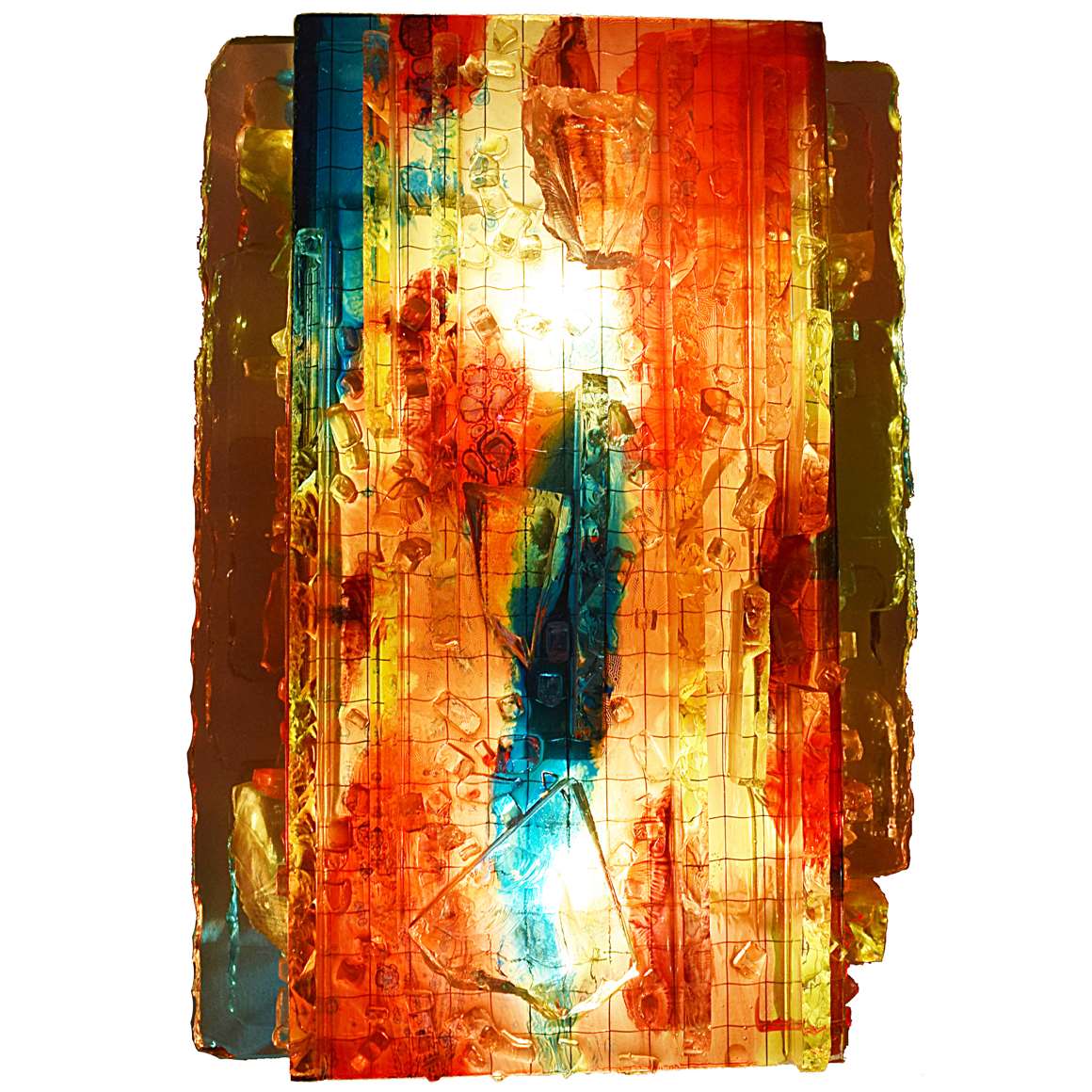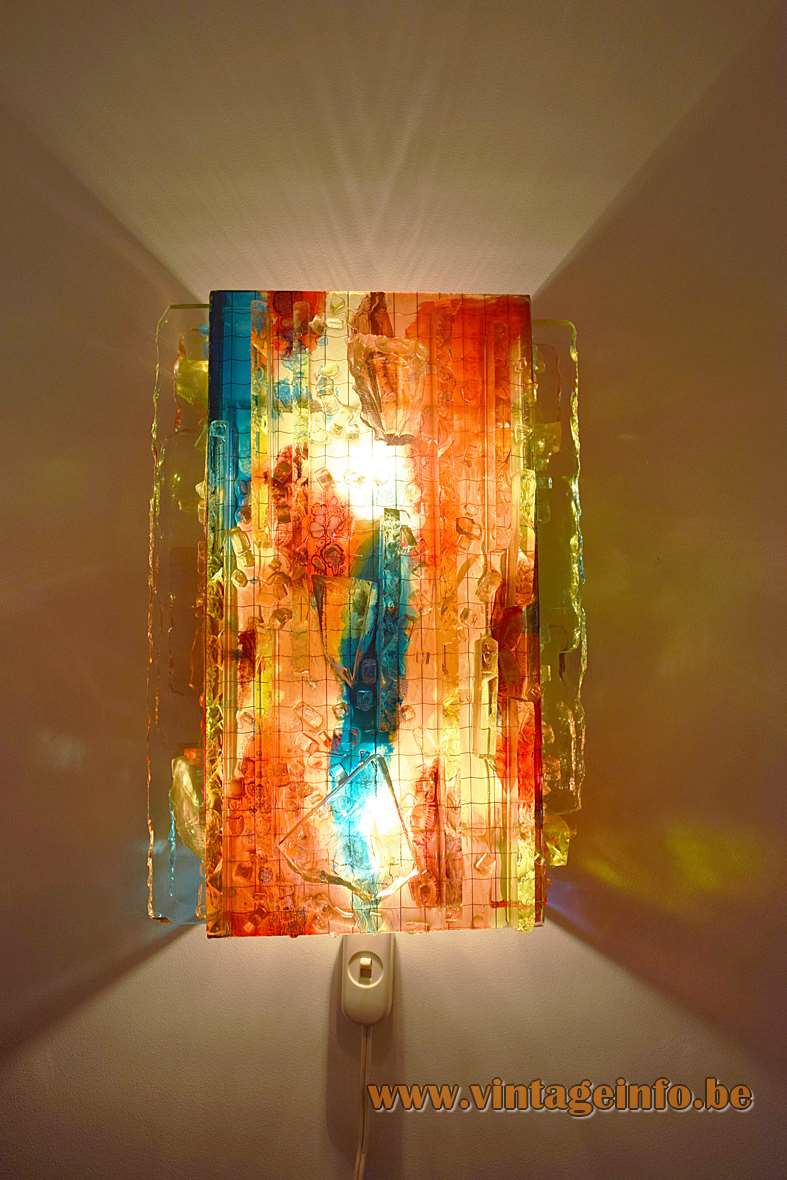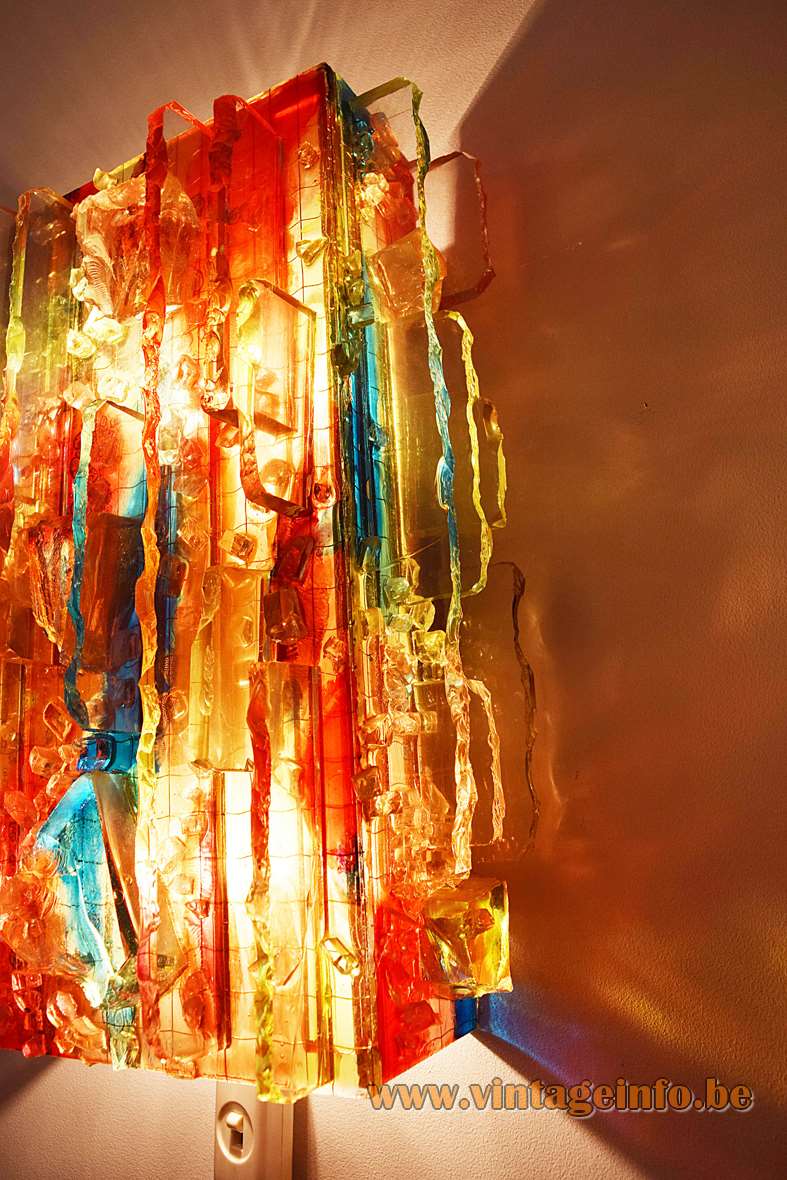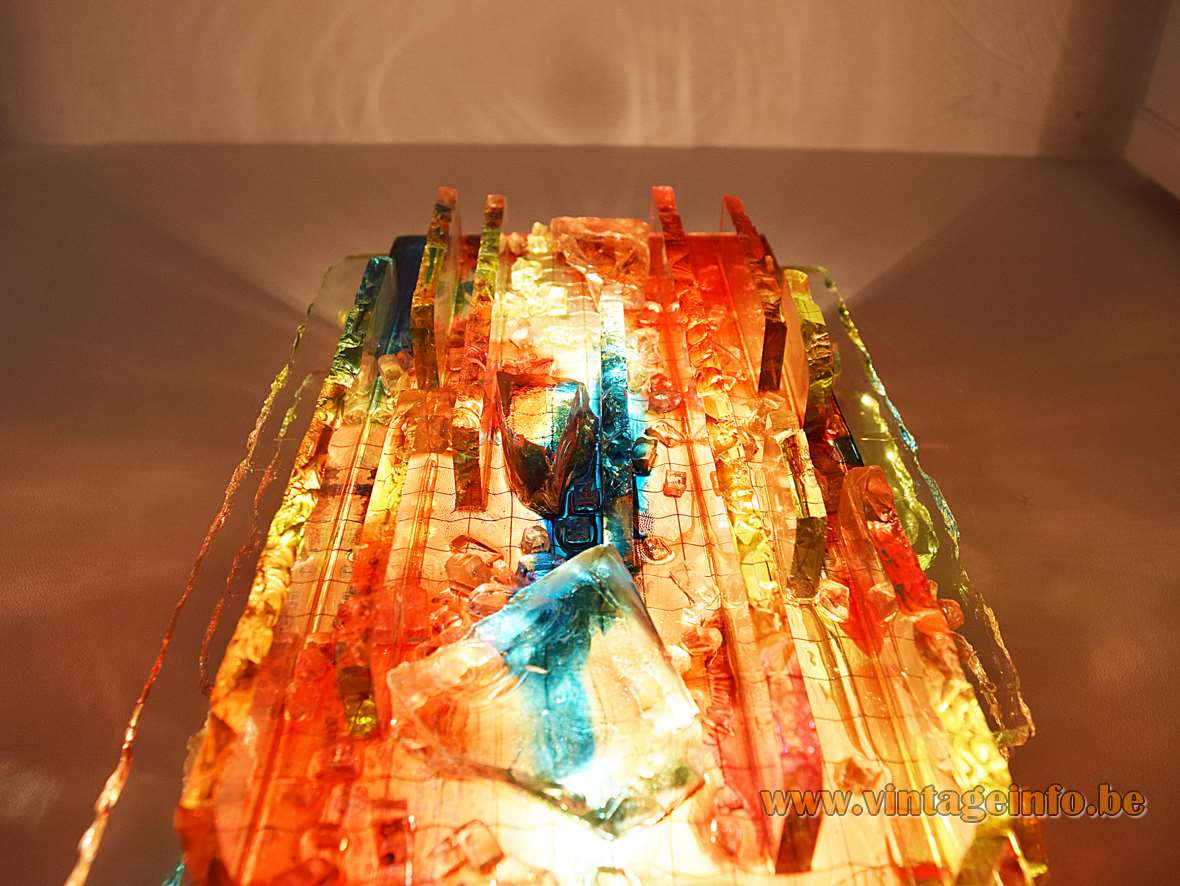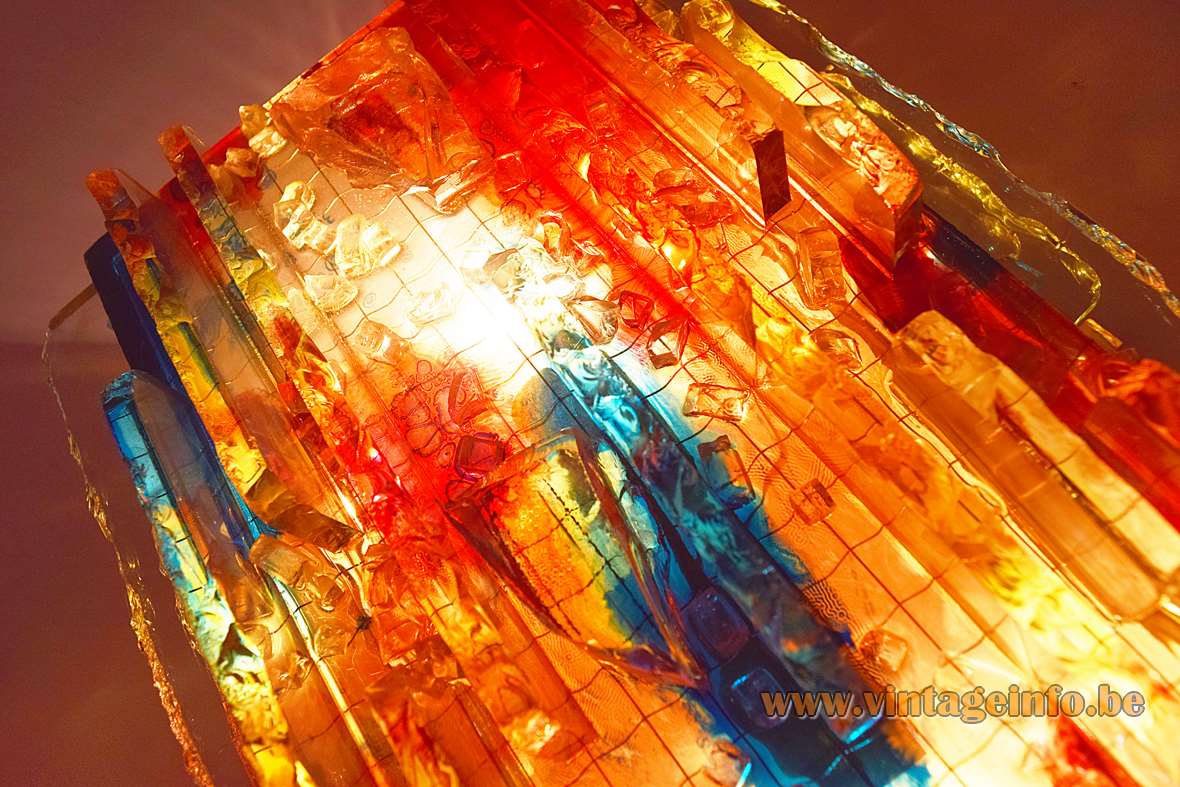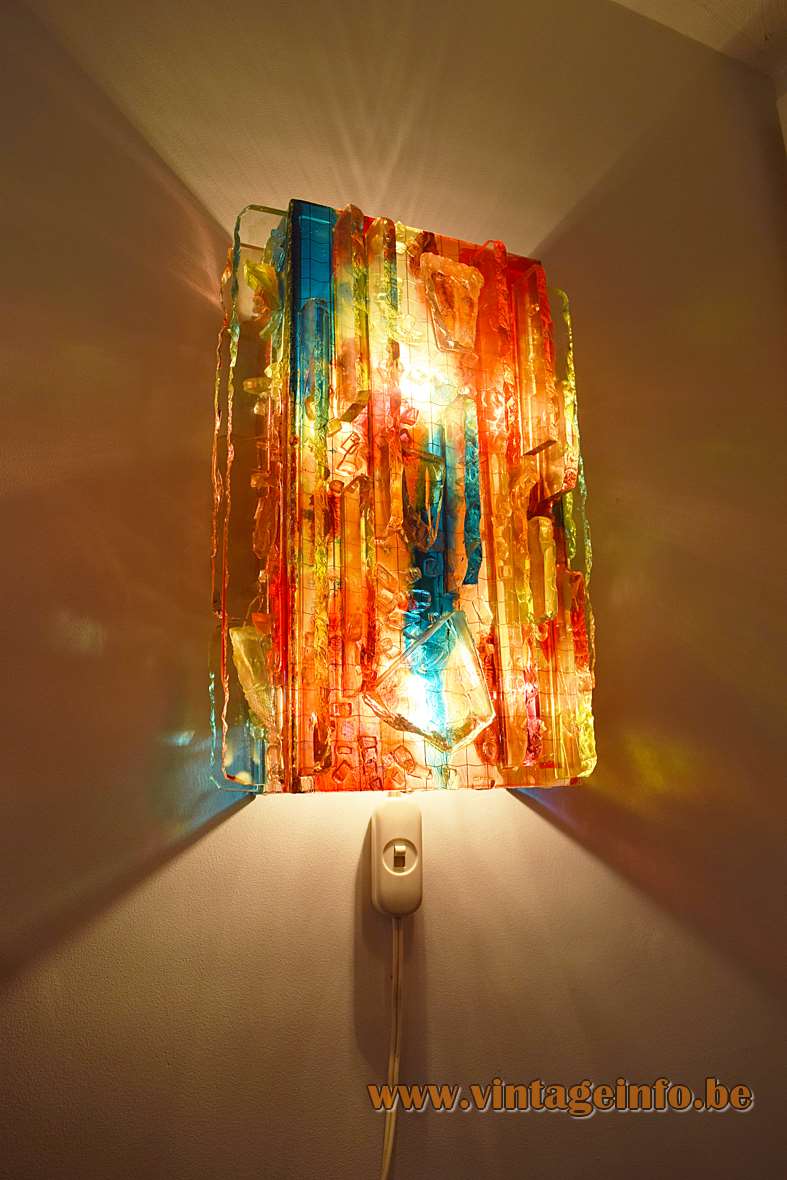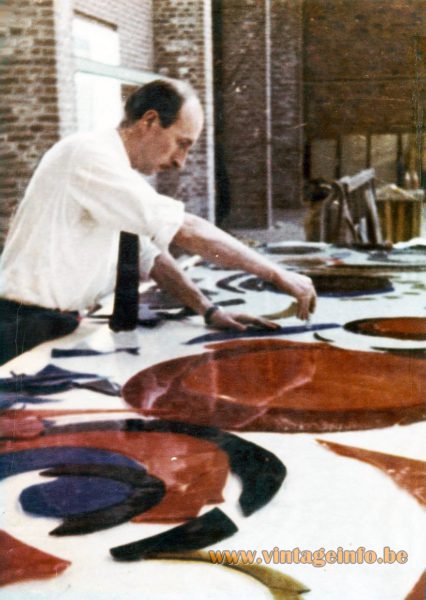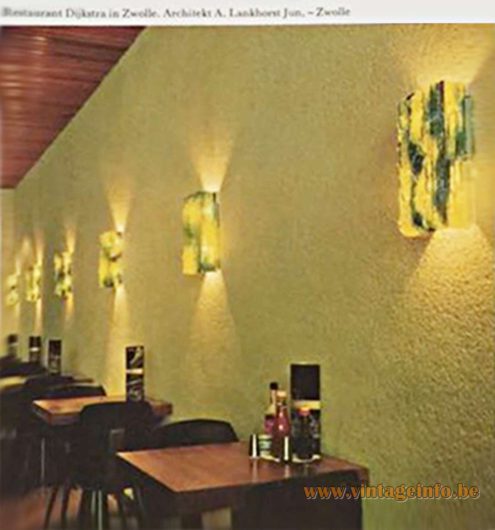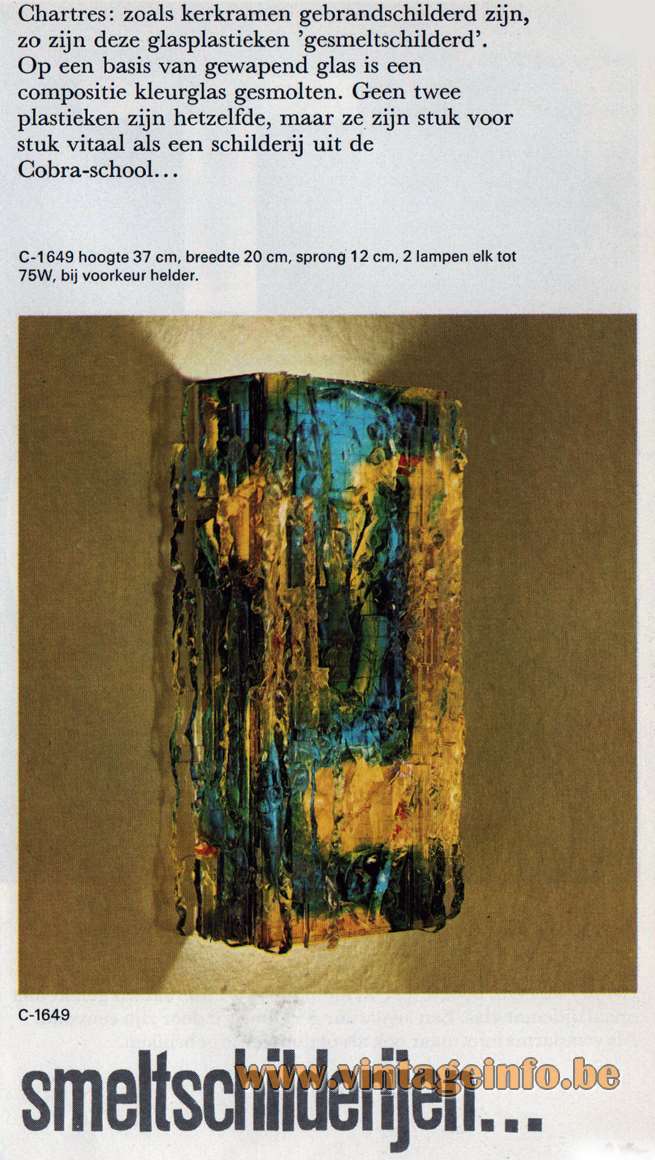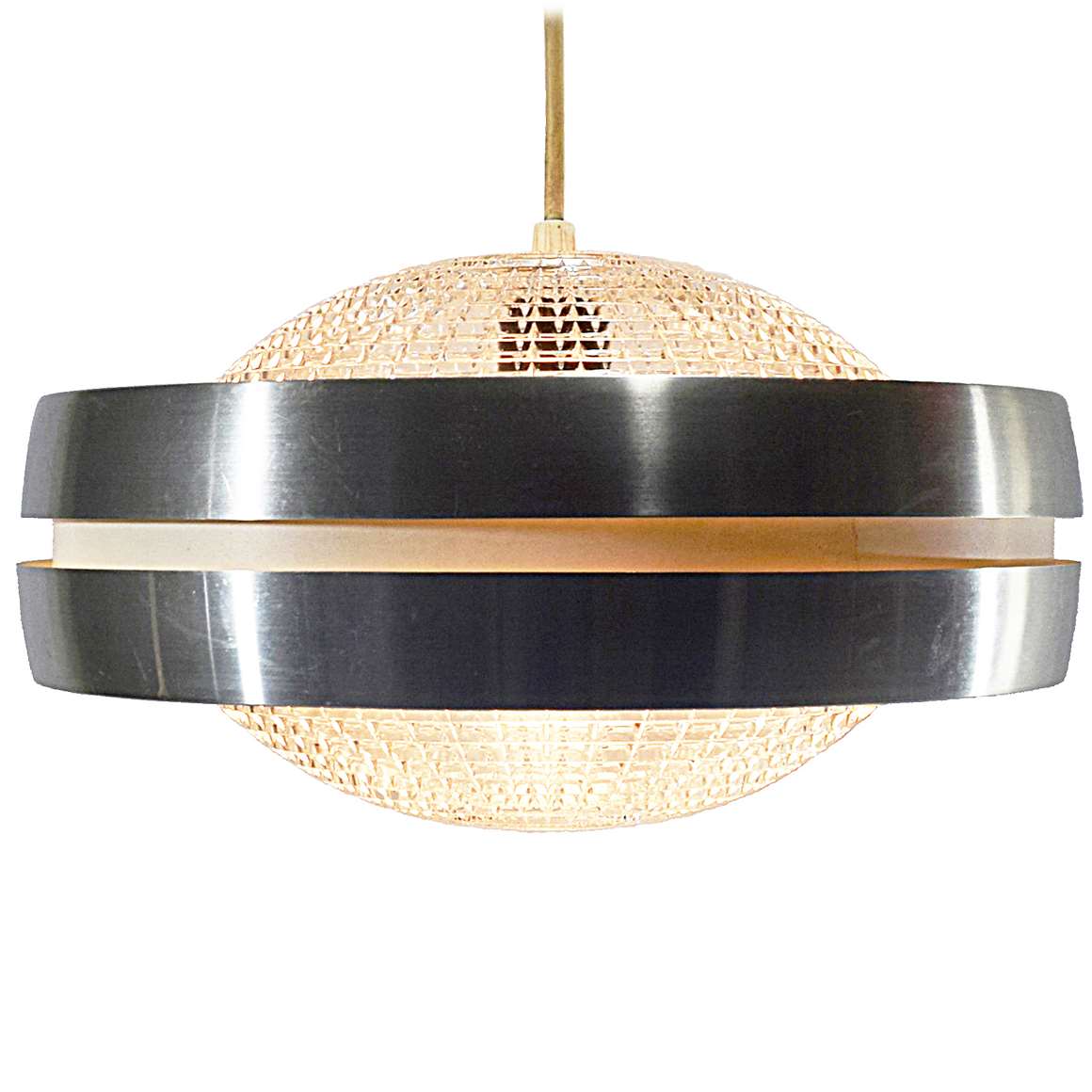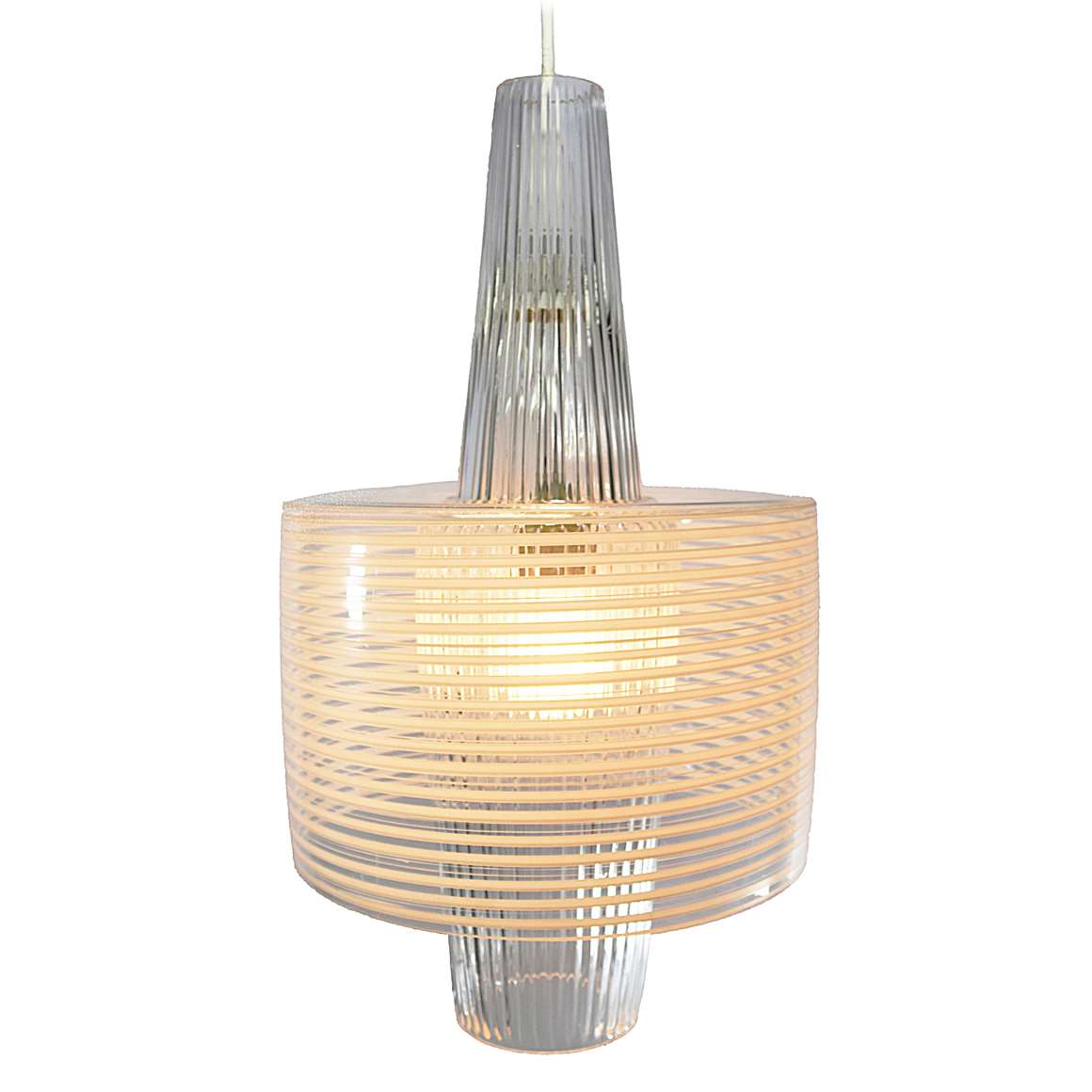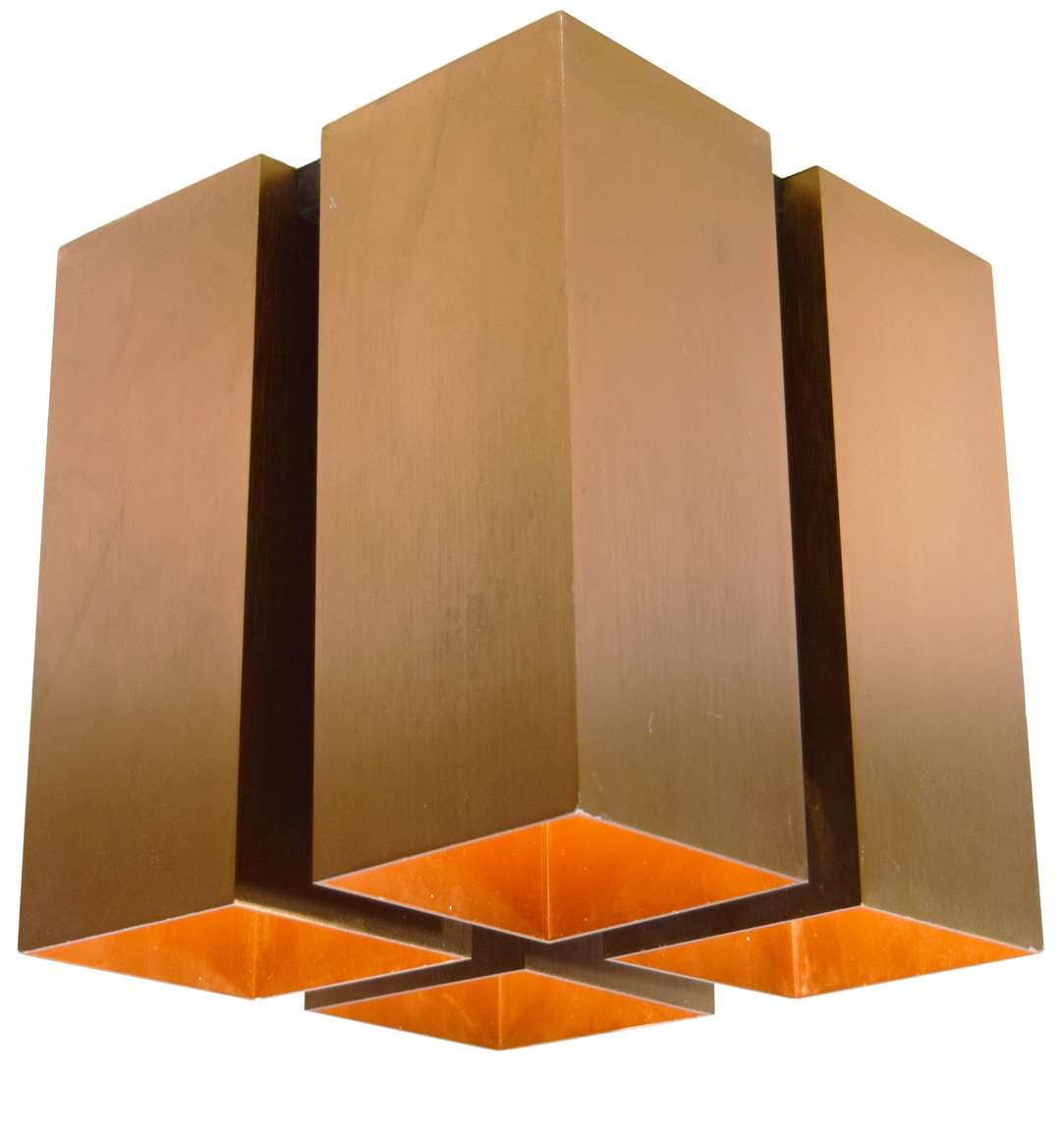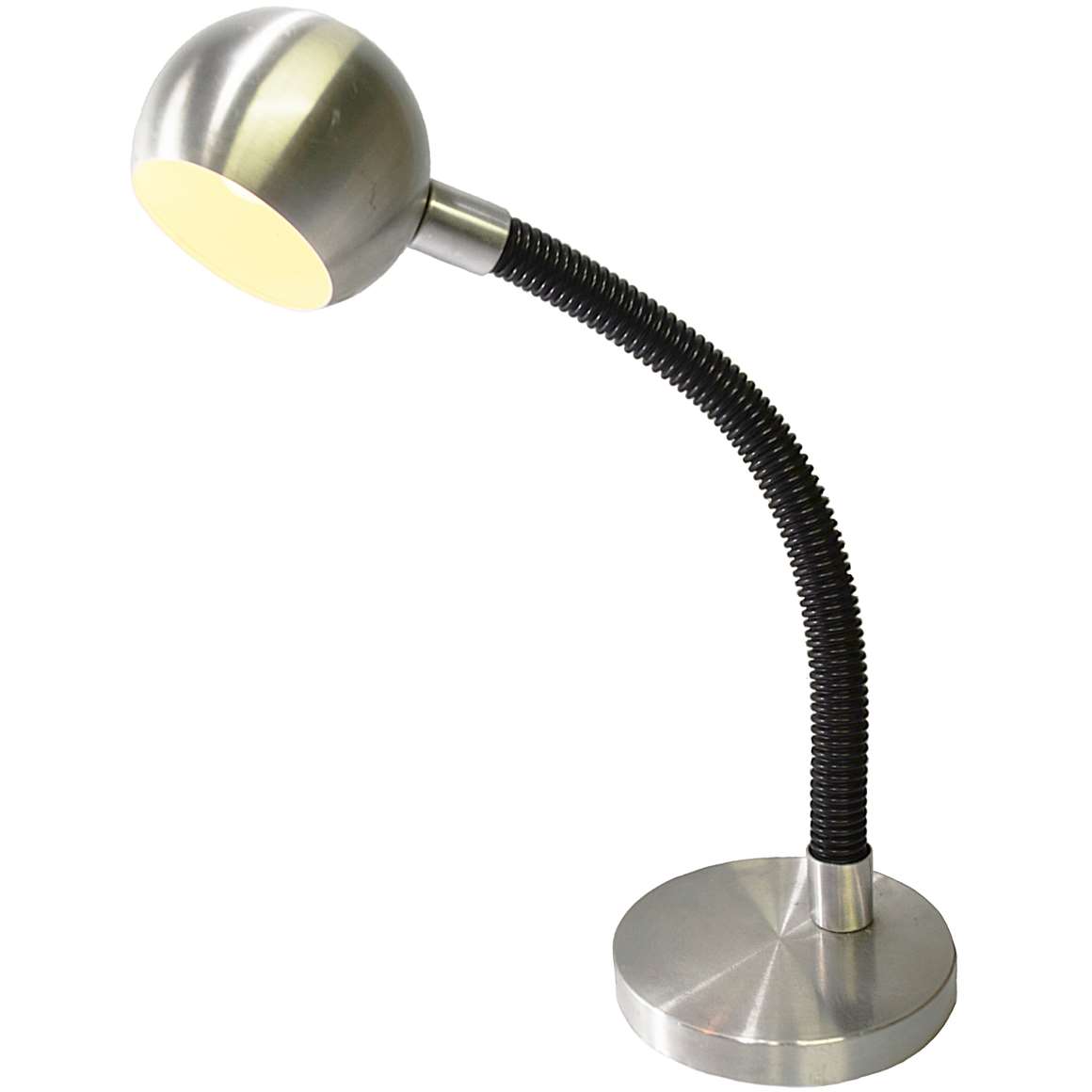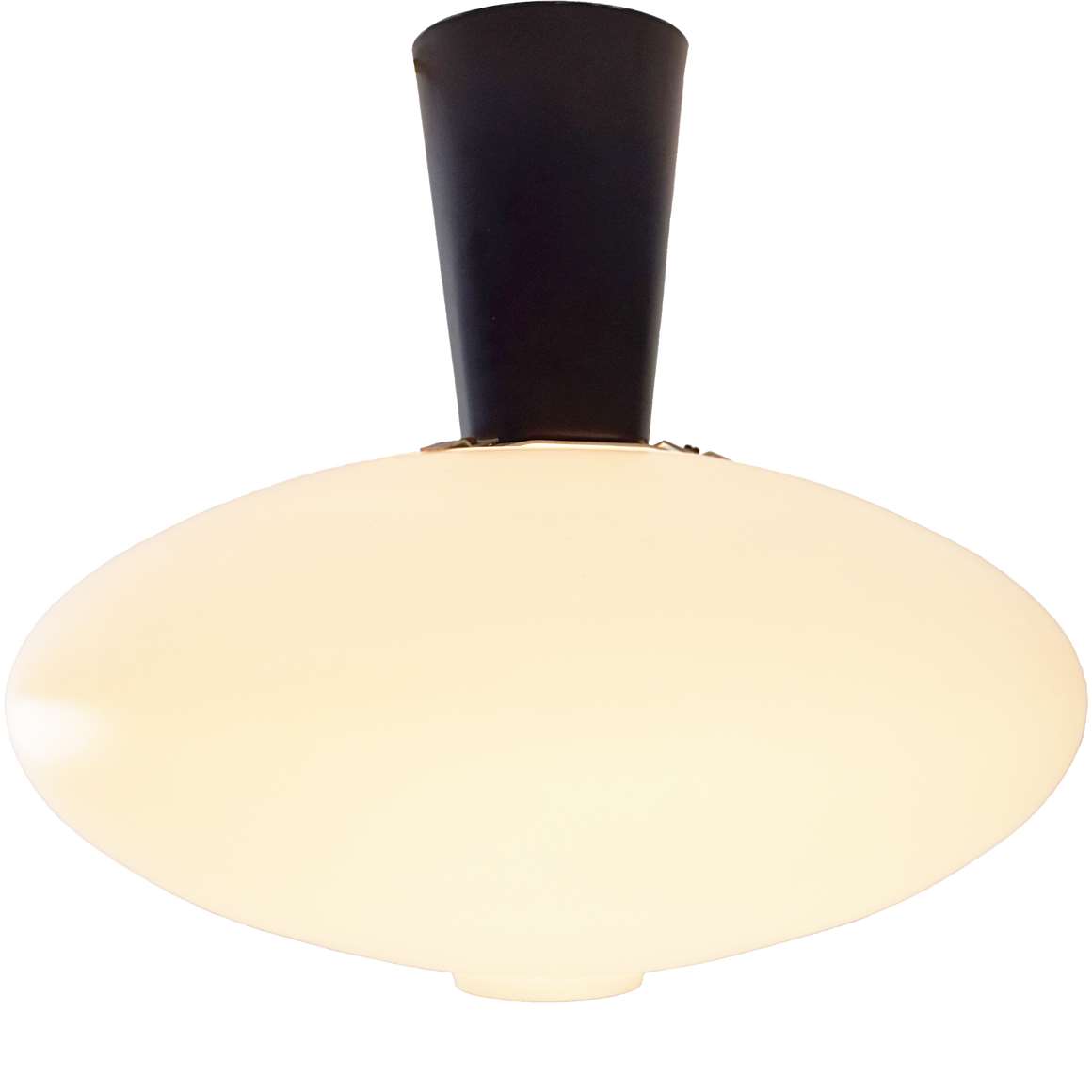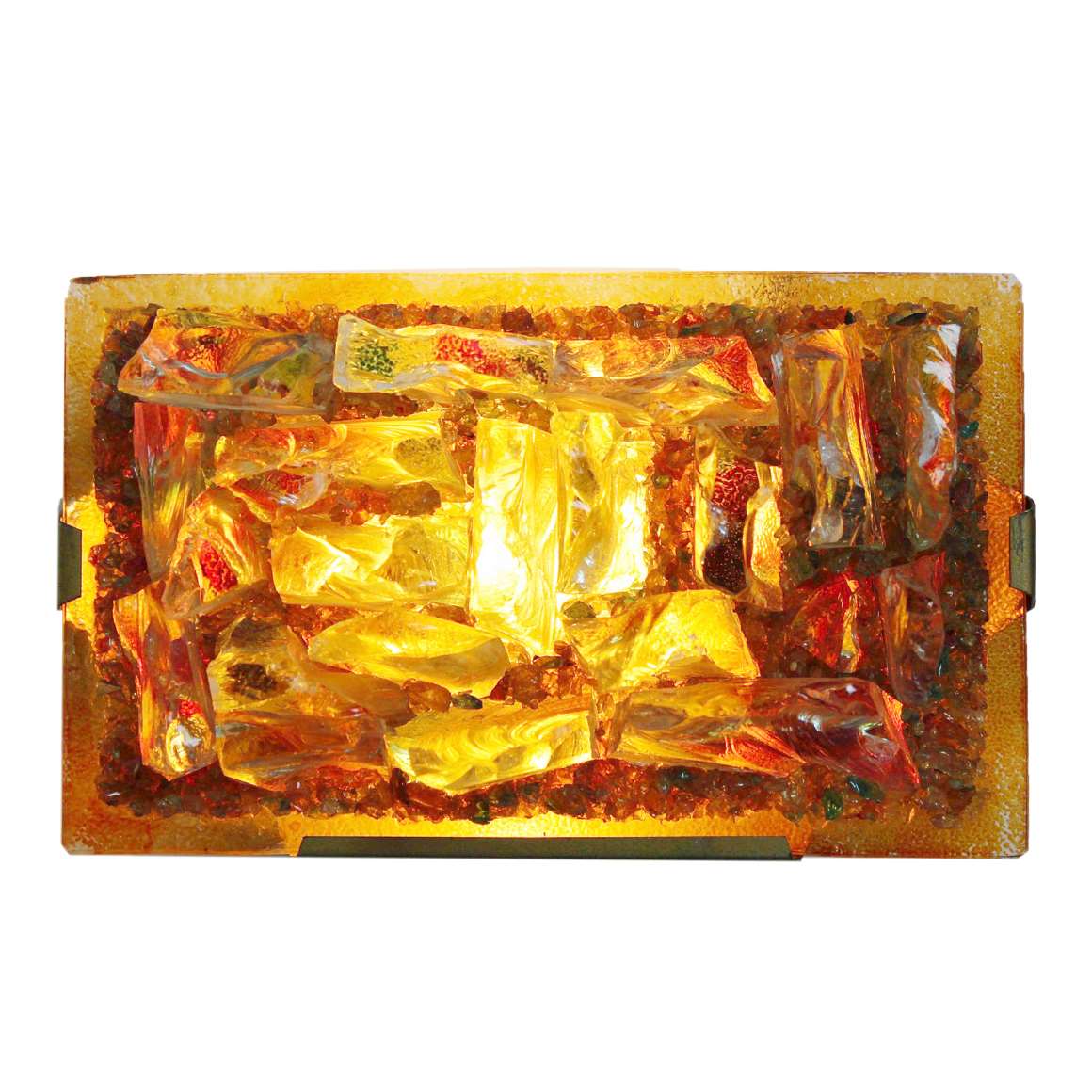Willem van Oyen Sr. at work in his factory “BEVO glasindustrie”.
Original Dutch text in the catalogues
Smeltschilderijen
Chartres: zoals kerkramen gebrandschilderd zijn, zo zijn deze glasplastieken ‘gesmeltschilderd’. Op een basis van gewapend glas is een compositie kleurglas gesmolten. Geen twee plastieken zijn hetzelfde, maar ze zijn stuk voor stuk vitaal als een schilderij uit de Cobra-school…
C-1649 hoogte 37 cm, breedte 20 cm. sprong 12 cm, 2 lampen elk tot 75W, bij voorkeur helder.
English translation:
Melt paintings
Chartres: as church windows stained, so are these glass sculptures melt painted. On a base of reinforced glass is a composite colour glass melted. No two sculptures are the same, but they are all vital like a painting from the Cobra art school…
In the price list of January 1973 these lights were sold for 159 gulden, +- 80 euro.
Links (external links open in a new window)
Willem van Oyen – Wikipedia (only in Dutch)
Chartres Cathedral – Wikipedia
Brutalist architecture – Wikipedia
Le Corps De Mon Ennemi (1976) – Wikipedia
Le Corps De Mon Ennemi (1976) – IMDb
Vintageinfo
Lamps In The Movies
The Raak Chartres Wall Lamp was used as a prop in the French film Le Corps De Mon Ennemi (Body of my enemy) from 1976 with Jean-Paul Belmondo. Many Raak lamps together with Stilnovo and Harvey Guzzini lamps appear in this movie.
Raak Chartres Red Glass Wall Lamp
Materials: White painted metal (iron) wall mount. Coloured broken glass on reinforced glass, mainly red coloured glass fragments. Bakelite sockets.
Height: 34 cm / 13.38”
Depth: 14 cm / 5.51”
Width: 24 cm / 9.44”
Electricity: 2 bulbs E14, 2 x 40 watt maximum, 110/220 volt.
Any type of light bulb with an E14 screw base can be used. Not a specific one preferred.
Period: 1960s – Mid-Century Modern.
Designer: Willem van Oyen Sr. (1921-2004).
Manufacturer:Raak, Amsterdam, The Netherlands.
Other versions: This Raak Chartres red glass wall lamp exists in a few sizes and also made in green with 2 E27 bulbs. The lights could also be custom made.
The style of these type of lamps is often named Brutalist. Not to be confused with the Brutalist architecture, or Brutalism from more or less the same period. That is something completely different.
Willem van Oyen Senior
Willem van Oyen Senior had a small factory that produced these lamps for Raak Amsterdam, known as “BEVO glasindustrie “. They are all handmade and therefore slightly different. The Bevo company still exist today and is now owned by his son, Willem van Oyen Junior.
These large brutalist wall lamps were inspired by the stained glass windows of the famous Chartres Cathedral in France, also known as the Cathedral of Our Lady of Chartres, about 80 kilometres (50 mi) south-west of Paris.
A. Lankhorst
The handmade glass art of these wall lamps is the work of glass artist Willem van Oyen Sr. There are several references on the internet attributing them to A. Lankhorst. Lankhorst was an architect who used these wall lamps to decorate restaurant “Dijkstra ” in Zwolle, The Netherlands, mentioned in the Raak Catalogue 7 from 1970 as you can see on the picture below.
Raak
The Dutch company Raak was founded in 1954 by Carel O. Lockhorn (18 June 1923 – 6 October 2004), a previous employee of Philips lighting from Eindhoven. Raak, which means “to hit” in Dutch, implies design which precisely “hits the nail on the head”.
Raak is best known for their organic modern design of the 1960s and 1970s which combined glass & metals for a sophisticated futuristic style.
The light company collaborated with several international designers and architects, including Bertrand Balas, Evert Jelle Jelles, Frank Ligtelijn, Ger Vos, Jan Jasper Fayer, Li Helo, Maija-Liisa Komulainen, Nan Platvoet, Nanny Still-Mackinney, Nico Kooi, Sergio Asti, Tapio Wirkala, Willem van Oyen and many others.
Collaborations
Raak also collaborated with other companies. They worked with the German Peill+Putzler for the Raak Globe lamps. Peill+Putzler produced the glass. They also sold lamps made by Peill+Putzler, such as a pendant lamp designed by Aloys Ferdinand Gangkofner. For the Raak Discus the glass was made by Bega, also a German company. For the Stalactites flush mounts a cooperation with the Belgian Val Saint Lambert was undertaken in the late 1950s. Raak also sold some lamps that were produced by Staff Leuchten (Staff & Schwarz Leuchtenwerke GMBH) from Germany.
Carel Lockhorn sold the company in 1974 to ITT but remained a director until 1977. In 1980 Raak merged with BIS Lighting from Aalsmeer, also in The Netherlands and was renamed into BisRaak. In 1986 the Raak company became independent again. The company got a business appearance and only the colours white, black and grey were still processed.
In 1999, Raak merged with Artilite B.V. and Indoor B.V. and became CLA: Centrum voor Lichtarchitectuur B.V. in Drachten (Centre for Light Architecture). Lichtarchitectuur (light architecture) was the Raak tagline from the beginning in the 1950s. The Centre for Lighting Architecture was founded by Egbert Keen. The company was declared bankrupt on 19-05-2011.
